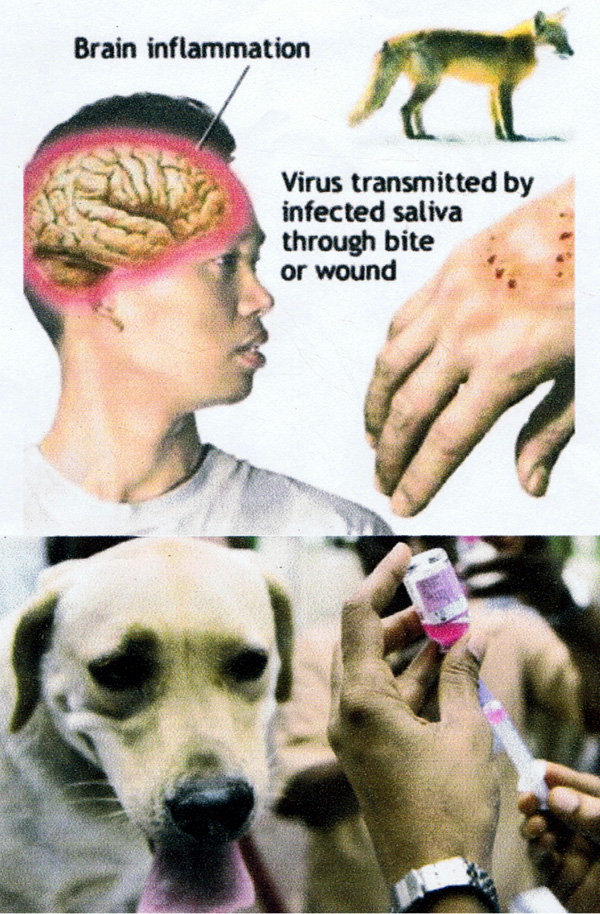Dr. S.K Gupta
The theme of the day is to promote the information, prevention and disease elimination.
Rabies is a dreadly disease with mortality 100% despite best attempts at treatment. This is because the patients have not received early vaccination since in rural areas still people believe in Jadu Jantar and quacks who keep patients out of vaccination reach. Though Dog Vaccination programmes have decreased the risk of RABIES in a number of regions in the World.
If we see the figure of deaths world wide. In 1990 there were 54000 deaths which has been decreased to 26000 by 2010 in the World.
India has the highest incidence of human RABIES in the world with more than 20000 people dying of RABIES every year. That is the third of the global toll \. This is primarily because of stray dogs, whose numbers have greatly increased since 2001, as law forbids killing of stray dogs and sterlization in dogs is ineffective.
RABIES virus is a prototype of Lassavirus of the Rabdoviridae family. It is bullet shaped virus. The virus travels in the nerves after the rabid dog bite and is carried centripetally to dorsal root ganglion and thence to the brain where massive replication occurs.
Usual incubation period from dog bite to appearance of symptoms is 4 to 8 weeks but may vary from 5 days to 7 years. Face and neck bites have shorter incubation period.
Types of RABIES in Humans
There are two types of RABIES,
* Encephalitic form or furious RABIES – 80%
* Dumb or paralytic RABIES – 20%
In Encephalitic form patient shows restlessness, excessive salivation and hydro-phobia the historic name for the RABIES (sudden spasm of muscles of mouth, pharynx, larynx and the entire respiratory apparatus especially at the sight of water). Hallucinations, delusions may occur due to malfunction of limbic system and brainstem, unlike man, there is no hydrophobic syndrome in dogs. Animal runs amok, with temperamental changes and biting mania.
Diagnosis of RABIES is mainly clinical with history of bite but the gold standard technique recommended by WHO is demonstration of viral antigen in brain tissue which provides 100% sensitivity.
As it is a fact once the RABIES occurs there is no treatment.
But as soon as patient is bitten by rabid dog, one should immediately wash the wound with soap water or with iodine and get injected human RABIES immunoglobulin (HRIG) into the wound and half intra-muscularly.
After this patient should get vaccination with human diploid cell RABIES vaccine with five doses by I.M or I.D route.
To conclude RABIES is a fatal disease but prevention is better than cure. Keep yourself away from stray dogs, get your pet dogs properly vaccinated and as soon as patient is bitten by the rabid dog get treatment immediately to get rid of fatal disease.
(The author is a Neurologist)
Trending Now
E-Paper


